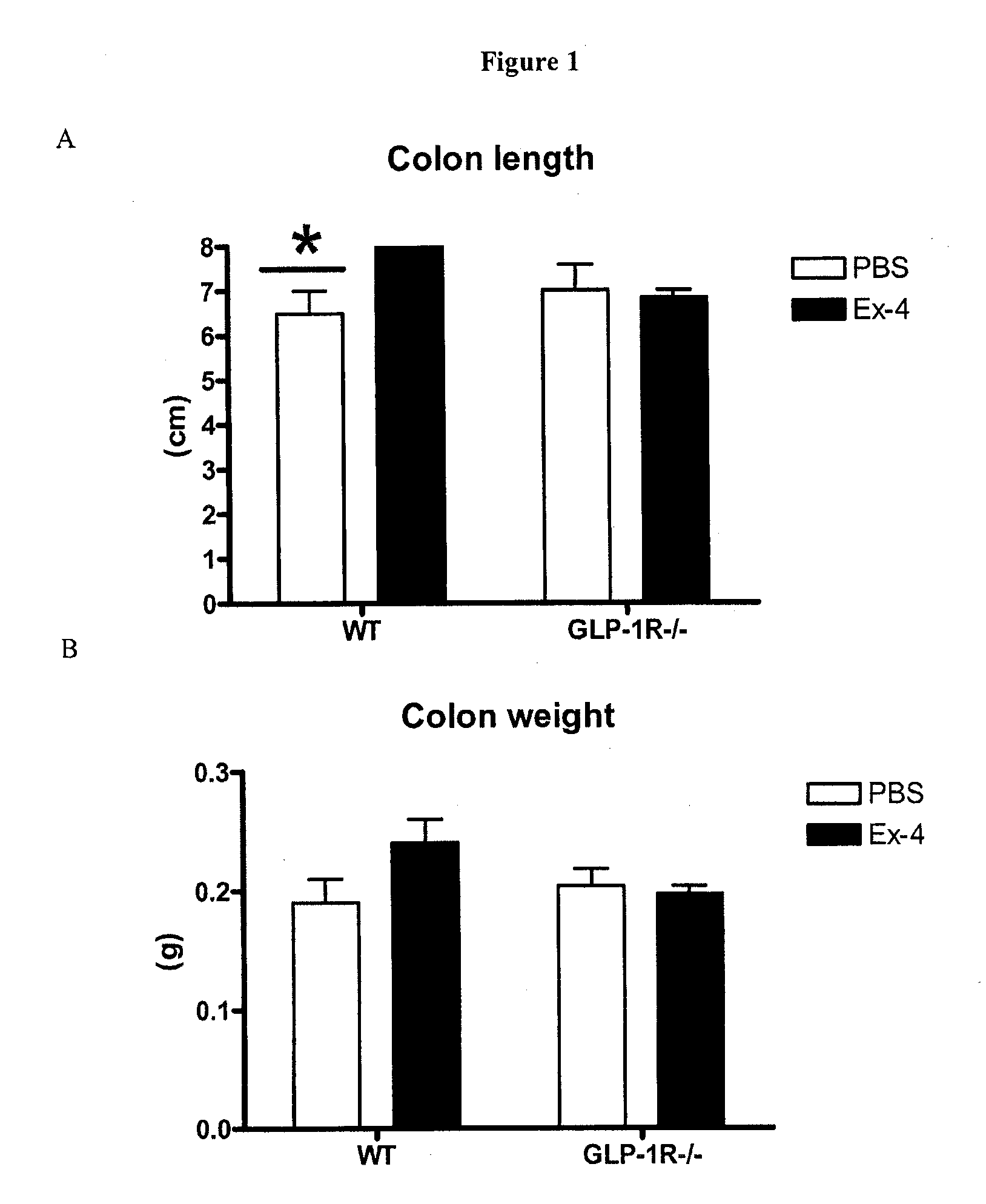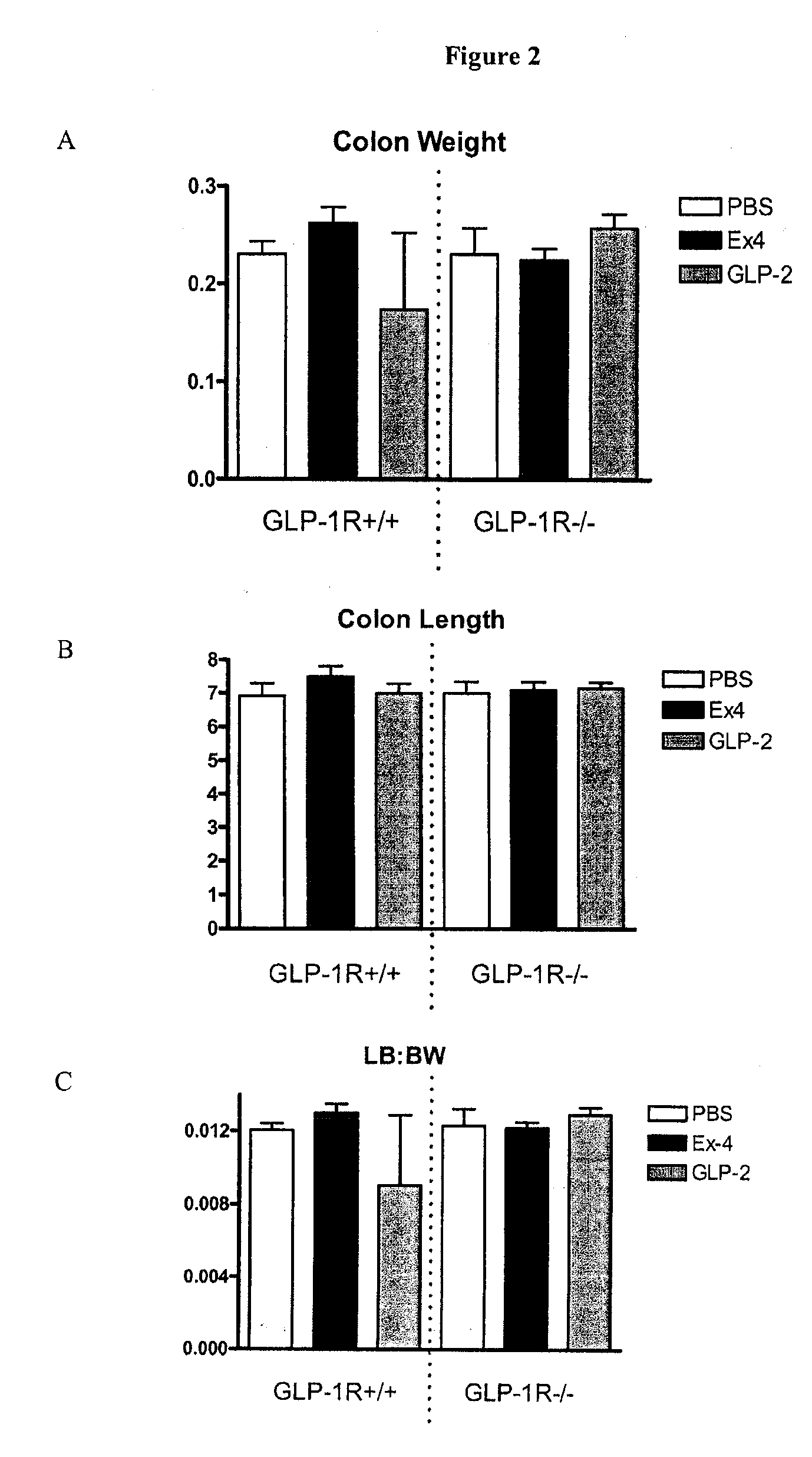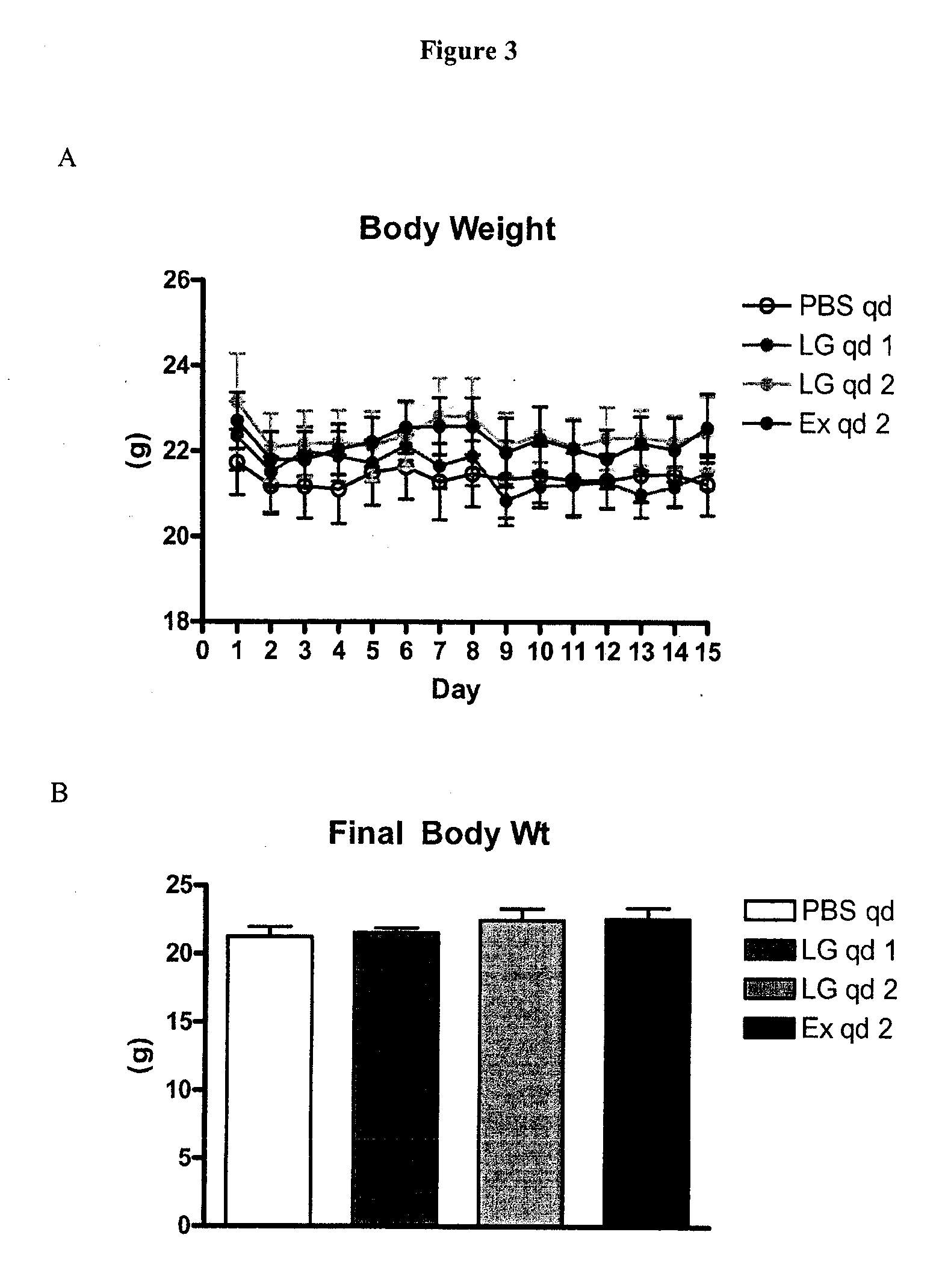Methods for Treating Disorders of the Gastrointestinal Tract Using a GLP-1 Agonist
a technology of glucagon and peptide, which is applied in the direction of peptide/protein ingredients, extracellular fluid disorder, metabolic disorder, etc., can solve the problems of severe adverse side effects, headache, nausea, etc., to improve the functioning promote the healing of the lining of the large bowel epithelium, and increase the mass and/or length of the small or large intestin
- Summary
- Abstract
- Description
- Claims
- Application Information
AI Technical Summary
Benefits of technology
Problems solved by technology
Method used
Image
Examples
example 1
Effect of GLP-1 Receptor Agonist in GLP-1 Receptor Knockout Animals
[0163]The following animals were used in the study: WT represents wild type C57BL / 6 mice (or GLP-1R+ / +); GLP-1R− / − represents C57BL / 6 mice with genetic disruption (knockout) of the GLP-1 receptor as described in Scrocchi L A, et al (Nature Med 2:1254-1258, 1996).
[0164]All data are from male mice that ranged from approximately 4 to 6 months old at the time of the experiment. All mice were maintained on a diet of standard rodent chow throughout the study. Mice were given intraperitoneal (i.p.) injections of phosphate buffered saline (PBS) or 1 μg of Exendin-4 (Ex-4) (dissolved in PBS) for 10 days. All injections were administered into the lateral aspect of the lower right quadrant of the mouse's abdomen. All injections were administered in a volume of 100 μl using an insulin syringe with a 31 gauge, 8 mm long needle. All injections were administered twice a day with the first injection given between 9 am and 10 am and ...
example 2
Effect of GLP-1 Receptor Agonist in Animals
[0165]All mice were maintained on a standard rodent diet throughout the study. All data are from female C57BL / 6 mice that were approximately 11 weeks old at the time of sacrifice. Mice were given subcutaneous (s.c.) injections of PBS, 10 nmol / kg of exendin-4 (Ex-4) (dissolved in PBS), or 5 μg of Gly-2-GLP-2 (dissolved in PBS) for 10 days, commencing when mice were either 10 weeks of age or had a body weight of 18-20 g. The dosing volume was 100 μl per mouse. All injections were administered subcutaneously at the back of the neck, between the animal's shoulders using an insulin syringe with a 31 gauge, 8 mm long needle. All injections were administered twice a day with the first injection given at 8 am and the second injection given between 5 pm and 6 pm. The dosing schedule commenced with the evening dose on day 1 and ended with the evening dose on day 10. All mice were euthanized on day 11. Brdu (100 mg / kg) was administered via i.p injecti...
example 3
Study to Determine Efficacy of GLP-1 Receptor Agonists when Administered Once Per Day (qd)
[0166]The following materials and methods were used in the study described in this example.
[0167]All mice used in the study were 10-week old WT female mice on the C57B1 / 6 genetic background. The mice were maintained on regular drinking water and a standard rodent chow diet. The following four groups of mice were included in this study:[0168](i) PBS qd—this group was given ip injections of 100 μl of phosphate buffered saline (PBS) once per day for 14 days[0169](ii) LG qd 1—this group was given ip injections of 100 μl of PBS once per day for 7 days and then 75 μg / kg of Liraglutide (LG) once per day for 7 days[0170](iii) LG qd 2—this group was given ip injections of 75 μg / kg of Liraglutide (LG) once per day for 14 days[0171](iv) Ex qd 2—this group was given ip injections of 10 nmol / kg of Exendin-4 (Ex) once per day for 14 days
[0172]All injections were given once per day, and were administered ip u...
PUM
| Property | Measurement | Unit |
|---|---|---|
| Mass | aaaaa | aaaaa |
| Mass | aaaaa | aaaaa |
| Frequency | aaaaa | aaaaa |
Abstract
Description
Claims
Application Information
 Login to View More
Login to View More - R&D
- Intellectual Property
- Life Sciences
- Materials
- Tech Scout
- Unparalleled Data Quality
- Higher Quality Content
- 60% Fewer Hallucinations
Browse by: Latest US Patents, China's latest patents, Technical Efficacy Thesaurus, Application Domain, Technology Topic, Popular Technical Reports.
© 2025 PatSnap. All rights reserved.Legal|Privacy policy|Modern Slavery Act Transparency Statement|Sitemap|About US| Contact US: help@patsnap.com



